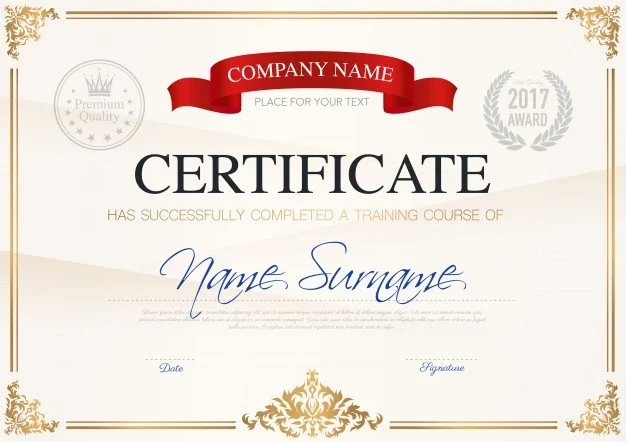
0
+
Google Reviews

0
+
Data Science R course effectively covers Data analytics, statistical predictive modelling and machine learning through various practical examples and projects This course does not require a prior quantitative or mathematics background. It starts by introducing basic concepts such as the mean, median mode etc. and eventually covers all aspects of an analytics (or) data science career from analysing and preparing raw data to visualizing your findings. If you’re a programmer or a fresh graduate looking to switch into an exciting new career track, or a data analyst looking to make the transition into the tech industry – this course will teach you the basic to Advance techniques used by real-world industry data scientists.


Duration of Training : 60 hrs
Batch type : weekdays /weekends/ Customized Batches
Mode of Training: Offline / Online / Corporate Training
Projects Given : 2 Projects minimum
Trainer Profile : Experienced Faculty from IT Industry
Projects | Assignment | Scenarios and Used Case Studies






Introduction to Data Science With R
What is analytics & Data Science?
Common Terms in Analytics
Analytics vs. Data warehousing, OLAP, MIS Reporting
Relevance in industry and need of the hour
Types of problems and business objectives in various industries
How leading companies are harnessing the power of analytics?
Critical success drivers
Overview of analytics tools & their popularity
Analytics Methodology & problem solving framework
List of steps in Analytics projects
Identify the most appropriate solution design for the given problem statement
Project plan for Analytics project & key milestones based on effort estimates
Build Resource plan for analytics project
Why R for data science?
Introduction R/R-Studio – GUI
Concept of Packages – Useful Packages (Base & Other packages)
Data Structure & Data Types (Vectors, Matrices, factors, Data frames, and Lists)
Importing Data from various sources (txt, dlm, excel, sas7bdata, db, etc.)
Database Input (Connecting to database)
Exporting Data to various formats)
Viewing Data (Viewing partial data and full data)
Variable & Value Labels – Date Values
Data Manipulation steps
Creating New Variables (calculations & Binning)
Dummy variable creation
Applying transformations
Handling duplicates
Handling missings
Sorting and Filtering
Subsetting (Rows/Columns)
Appending (Row appending/column appending)
Merging/Joining (Left, right, inner, full, outer etc)
Data type conversions
Renaming
Formatting
Reshaping data
Sampling
Data manipulation tools
Operators
Functions
Packages
Control Structures (if, if else)
Loops (Conditional, iterative loops, apply functions)
Arrays
R Built-in Functions (Text, Numeric, Date, utility)
Numerical Functions
Text Functions
Date Functions
Utilities Functions
R User Defined Functions
R Packages for data manipulation (base, dplyr, plyr, data.table, reshape, car, sqldf, etc)
introduction exploratory data analysis
Descriptive statistics, Frequency Tables and summarization
Univariate Analysis (Distribution of data & Graphical Analysis)
Bivariate Analysis(Cross Tabs, Distributions & Relationships, Graphical Analysis)
Creating Graphs- Bar/pie/line chart/histogram/boxplot/scatter/density etc)
R Packages for Exploratory Data Analysis(dplyr, plyr, gmodes, car, vcd, Hmisc, psych, doby etc)
R Packages for Graphical Analysis (base, ggplot, lattice,etc)
Basic Statistics – Measures of Central Tendencies and Variance
Building blocks – Probability Distributions – Normal distribution – Central Limit Theorem
Inferential Statistics -Sampling – Concept of Hypothesis Testing
Statistical Methods – Z/t-tests( One sample, independent, paired), Anova, Correlations and Chi-square
Concept of model in analytics and how it is used?
Common terminology used in analytics & modelling process
Popular modelling algorithms
Types of Business problems – Mapping of Techniques
Different Phases of Predictive Modelling
Data Preparation
Need of Data preparation
Consolidation/Aggregation – Outlier treatment – Flat Liners – Missing values- Dummy creation – Variable Reduction
Variable Reduction Techniques – Factor & PCA Analysis
Segmentation: Solving Segmentation Problems
Introduction to Segmentation
Types of Segmentation (Subjective Vs Objective, Heuristic Vs. Statistical)
Heuristic Segmentation Techniques (Value Based, RFM Segmentation and Life Stage Segmentation)
Behavioral Segmentation Techniques (K-Means Cluster Analysis)
Cluster evaluation and profiling – Identify cluster characteristics
Interpretation of results – Implementation on new data
Linear Regression: Solving Regression Problems
Introduction – Applications
Assumptions of Linear Regression
Building Linear Regression Model
Understanding standard metrics (Variable significance, R-square/Adjusted R-square, Global hypothesis ,etc)
Assess the overall effectiveness of the model
Validation of Models (Re running Vs. Scoring)
Standard Business Outputs (Decile Analysis, Error distribution (histogram), Model equation, drivers etc.)
Interpretation of Results – Business Validation – Implementation on new data
Logistic Regression: Solving Classification Problems
Introduction – Applications
Linear Regression Vs. Logistic Regression Vs. Generalized Linear Models
Building Logistic Regression Model (Binary Logistic Model)
Understanding standard model metrics (Concordance, Variable significance, Hosmer Lemeshov Test, Gini, KS, Misclassification, ROC Curve etc)
Validation of Logistic Regression Models (Re running Vs. Scoring)
Standard Business Outputs (Decile Analysis, ROC Curve, Probability Cut-offs, Lift charts, Model equation, Drivers or variable importance, etc)
Interpretation of Results – Business Validation – Implementation on new data
Time Series Forecasting: Solving Forecasting Problems
Introduction – Applications
Time Series Components( Trend, Seasonality, Cyclicity and Level) and Decomposition
Classification of Techniques(Pattern based – Pattern less)
Basic Techniques – Averages, Smoothening, etc
Advanced Techniques – AR Models, ARIMA, etc
Understanding Forecasting Accuracy – MAPE, MAD, MSE, etc
Machine Learning -Predictive Modeling – Basics
Introduction to Machine Learning & Predictive Modeling
Types of Business problems – Mapping of Techniques – Regression vs. classification vs. segmentation vs. Forecasting
Major Classes of Learning Algorithms -Supervised vs Unsupervised Learning
Different Phases of Predictive Modeling (Data Pre-processing, Sampling, Model Building, Validation)
Overfitting (Bias-Variance Trade off) & Performance Metrics
Feature engineering & dimension reduction
Concept of optimization & cost function
Overview of gradient descent algorithm
Overview of Cross validation(Bootstrapping, K-Fold validation etc)
Model performance metrics (R-square, Adjusted R-squre, RMSE, MAPE, AUC, ROC curve, recall, precision, sensitivity, specificity, confusion metrics )
Unsupervised Learning: Segmentation
What is segmentation & Role of ML in Segmentation?
Concept of Distance and related math background
K-Means Clustering
Expectation Maximization
Hierarchical Clustering
Spectral Clustering (DBSCAN)
Principle component Analysis (PCA)
Supervised Learning: Decision Trees
Decision Trees – Introduction – Applications
Types of Decision Tree Algorithms
Construction of Decision Trees through Simplified Examples; Choosing the “Best” attribute at each Non-Leaf node; Entropy; Information Gain, Gini Index, Chi Square, Regression Trees
Generalizing Decision Trees; Information Content and Gain Ratio; Dealing with Numerical Variables; other Measures of Randomness
Pruning a Decision Tree; Cost as a consideration; Unwrapping Trees as Rules
Decision Trees – Validation
Overfitting – Best Practices to avoid
Taming big text, Unstructured vs. Semi-structured Data; Fundamentals of information retrieval, Properties of words; Creating Term-Document (TxD);Matrices; Similarity measures, Low-level processes (Sentence Splitting; Tokenization; Part-of-Speech Tagging; Stemming; Chunking)
Finding patterns in text: text mining, text as a graph
Natural Language processing (NLP)
Text Analytics – Sentiment Analysis using R
Text Analytics – Word cloud analysis using R
Text Analytics – Segmentation using K-Means/Hierarchical Clustering
Text Analytics – Classification (Spam/Not spam)
Applications of Social Media Analytics
Metrics(Measures Actions) in social media analytics
Examples & Actionable Insights using Social Media Analytics
Important R packages for Machine Learning (caret, H2O, Randomforest, nnet, tm etc)
Fine tuning the models using Hyper parameters, grid search, piping etc.
+91 8882400500




I had undergone oracle DBA course under Chetan sir's Guidance an it was a very good learning experience overall since they not only provide us with theoretical knowledge but also conduct lot of practical sessions which are really fruitful and also the way of teaching is very fine clear and crisp which is easier to understand, overall I had a great time for around 2 months, they really train you well.also make it a point to clear all your doubts and provide you with clear and in-depth concepts hence hope to join sometime again
I have completed Oracle DBA 11g from Radical technology pune. Excellent trainer (chetna gupta). The trainer kept the energy level up and kept us interested throughout. Very practical, hands on experience. Gave us real-time examples, excellent tips and hints. It was a great experience with Radical technologies.
Linux learning with Anand sir is truly different experience... I don't have any idea about Linux and system but Anand sir taught with scratch...He has a great knowledge and the best trainer...he can solve all your queries related to Linux in very simple way and giving nice examples... 100 to Anand Sir.
I had a wonderful experience in Radical technologies where i did training in Hadoop development under the guidance of Shanit Sir. He started from the very basic and covered and shared everything he knew in this field. He was brilliant and had a lot of experience in this field. We did hands on for every topic we covered, and that's the most important thing because honestly theoretical knowledge cannot land you a job.
I have recently completed Linux course under Anand Sir and can assuredly say that it is definitely the best Linux course in Pune. Since most of the Linux courses from other sources are strictly focused on clearing the certification, they will not provide an insight into real-world server administration, but that is not the case with Anand Sir's course. Anand Sir being an experienced IT infrastructure professional has an excellent understanding of how a data center works and all these information is seamlessly integrated into his classes.
1. Basic user account management (creating, modifying, and deleting users).
2. Password resets and account unlocks.
3. Basic file system navigation and management (creating, deleting, and modifying files and directories).
4. Basic troubleshooting of network connectivity issues.
5. Basic software installation and package management (installing and updating software packages).
6. Viewing system logs and checking for errors or warnings.
7. Running basic system health checks (CPU, memory, disk space).
8. Restarting services or daemons.
9. Monitoring system performance using basic tools (top, df, free).
10. Running basic commands to gather system information (uname, hostname, ifconfig).
1. Intermediate user account management (setting permissions, managing groups).
2. Configuring network interfaces and troubleshooting network connectivity issues.
3. Managing file system permissions and access control lists (ACLs).
4. Performing backups and restores of files and directories.
5. Installing and configuring system monitoring tools (Nagios, Zabbix).
6. Analyzing system logs for troubleshooting purposes.
7. Configuring and managing software repositories.
8. Configuring and managing system services (systemd, init.d).
9. Performing system updates and patch management.
10. Monitoring and managing system resources (CPU, memory, disk I/O).
1. Advanced user account management (LDAP integration, single sign-on).
2. Configuring and managing network services (DNS, DHCP, LDAP).
3. Configuring and managing storage solutions (RAID, LVM, NFS).
4. Implementing and managing security policies (firewall rules, SELinux).
5. Implementing and managing system backups and disaster recovery plans.
6. Configuring and managing virtualization platforms (KVM, VMware).
7. Performance tuning and optimization of system resources.
8. Implementing and managing high availability solutions (clustering, load balancing).
9. Automating system administration tasks using scripting (Bash, Python).
10. Managing system configurations using configuration management tools (Ansible, Puppet).
1. Learning basic shell scripting for automation tasks. 2. Understanding file system permissions and ownership. 3. Learning basic networking concepts (IP addressing, routing). 4. Learning how to use package management tools effectively. 5. Familiarizing with common Linux commands and utilities. 6. Understanding basic system architecture and components. 7. Learning basic troubleshooting techniques and methodologies. 8. Familiarizing with basic security principles and best practices. 9. Learning how to interpret system logs and diagnostic output. 10. Understanding the role and importance of system backups and restores.
1. Advanced scripting and automation techniques (error handling, loops).
2. Understanding advanced networking concepts (VLANs, subnetting).
3. Familiarizing with advanced storage technologies (SAN, NAS).
4. Learning advanced security concepts and techniques (encryption, PKI).
5. Understanding advanced system performance tuning techniques.
6. Learning advanced troubleshooting methodologies (root cause analysis).
7. Implementing and managing virtualization and cloud technologies.
8. Configuring and managing advanced network services (VPN, IDS/IPS).
9. Implementing and managing containerization technologies (Docker, Kubernetes).
10. Understanding enterprise-level IT governance and compliance requirements.
1. Designing and implementing complex IT infrastructure solutions. 2. Architecting and implementing highly available and scalable systems. 3. Developing and implementing disaster recovery and business continuity plans. 4. Conducting security audits and vulnerability assessments. 5. Implementing and managing advanced monitoring and alerting systems. 6. Developing custom automation solutions tailored to specific business needs. 7. Providing leadership and mentorship to junior team members. 8. Collaborating with other IT teams on cross-functional projects. 9. Evaluating new technologies and making recommendations for adoption. 10. Participating in industry conferences, workshops, and training programs.
Abu Dhabi
Abu Dhabi
Abu Dhabi
Abu Dhabi
Abu Dhabi
Abu Dhabi
Abu Dhabi
Abu Dhabi
Abu Dhabi
Abu Dhabi
Abu Dhabi
Abu Dhabi
Abu Dhabi
Abu Dhabi
Abu Dhabi
Abu Dhabi
Abu Dhabi
Abu Dhabi
Abu Dhabi
Abu Dhabi
Abu Dhabi
Abu Dhabi
Abu Dhabi
Abu Dhabi
Abu Dhabi
Abu Dhabi
Abu Dhabi
Abu Dhabi
Abu Dhabi
Abu Dhabi
Abu Dhabi
Abu Dhabi
Abu Dhabi
Abu Dhabi
Abu Dhabi
Abu Dhabi
Abu Dhabi
Abu Dhabi
Abu Dhabi
Abu Dhabi







(Our Team will call you to discuss the Fees)


(Our Team will call you to discuss the Fees)